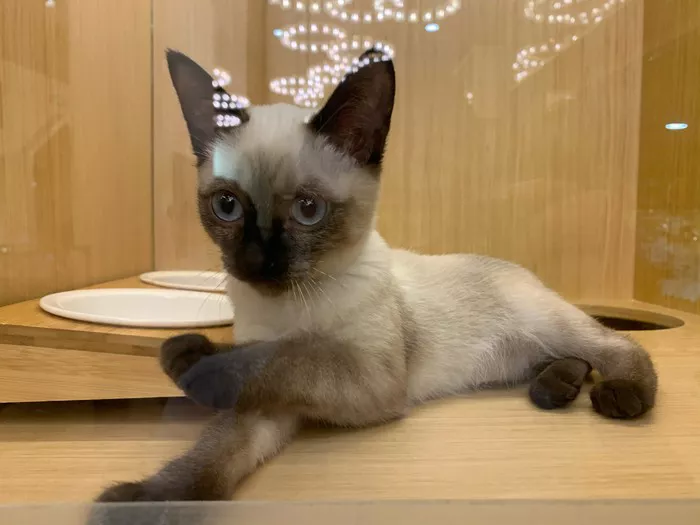Cats scratching furniture, walls, and various objects is a common behavior that can puzzle and frustrate pet owners. While it might seem destructive, scratching is a natural and essential behavior for cats. In this comprehensive guide, we’ll delve into the reasons behind your cat’s scratching behavior, the benefits of scratching, and effective ways to manage and redirect this instinctual activity.
Understanding the Instinct to Scratch
Before we explore why cats scratch, it’s essential to recognize that scratching is an inherent behavior deeply rooted in their biology. Cats have a few compelling reasons to scratch:
Territorial Marking: Cats have scent glands in their paws, and when they scratch, they leave both a visual mark and a scent trail. This helps them communicate with other cats and establish their territory.
Maintaining Claws: Scratching helps cats shed the outer sheath of their claws, keeping them sharp and ready for various tasks, such as climbing and hunting.
Stretching and Exercise: Scratching allows cats to stretch their muscles and keep their bodies limber. It’s an essential form of exercise for feline companions.
Stress Reduction: Scratching can be a stress-relieving activity for cats. It helps them release built-up tension and anxiety.
Play and Fun: Cats often view scratching as a form of entertainment. It’s an enjoyable activity that keeps them mentally stimulated.
Why Cats Target Furniture and Objects
While scratching is natural for cats, they don’t always choose appropriate surfaces for this behavior. Many cats prefer furniture, walls, or carpets over scratching posts or pads. Here are some reasons why cats might scratch these less-than-ideal surfaces:
Texture Preference: Cats have individual preferences for textures they find appealing. Some may prefer the texture of your sofa or carpet over a scratching post.
Location Matters: Cats often choose to scratch in areas where they spend the most time or near entry and exit points. This can be problematic when it involves furniture or door frames.
Territorial Marking: Cats may target specific objects or areas to mark their territory. If they feel threatened or stressed, they might scratch more to assert their presence.
Lack of Appropriate Scratching Options: If there aren’t suitable scratching posts or pads available, your cat may resort to furniture and other objects out of necessity.
Effective Strategies to Manage Cat Scratching
Managing your cat’s scratching behavior requires a combination of understanding their needs and providing appropriate outlets for their instincts. Here are practical strategies to help address this behavior:
Provide Scratching Posts and Pads: Invest in sturdy, stable scratching posts or pads made from materials that your cat finds appealing, such as sisal or cardboard. Place these in areas where your cat likes to scratch.
Catnip or Attractants: Sprinkle catnip on or near the scratching post to make it more appealing. Some cats are drawn to scratching posts treated with attractant sprays.
Positive Reinforcement: Reward your cat with treats or praise when they use the scratching post. Positive reinforcement encourages them to associate the post with a positive experience.
Deter Inappropriate Surfaces: To discourage scratching on furniture, use double-sided tape, aluminum foil, or commercial pet deterrents on the areas your cat targets. These textures are often unpleasant for cats.
Regular Nail Trimming: Keep your cat’s claws trimmed to minimize damage from scratching. Consult your veterinarian or a professional groomer for guidance on safe nail trimming.
Protect Furniture: Cover furniture with slipcovers or furniture protectors to minimize damage while you work on redirecting your cat’s scratching behavior.
Environmental Enrichment: Provide a stimulating environment for your cat with toys, puzzle feeders, and interactive play. A mentally engaged cat may be less inclined to scratch out of boredom.
Consult a Veterinarian: If your cat’s scratching behavior seems excessive or is accompanied by other concerning signs, consult your veterinarian. Medical issues, such as skin problems or anxiety, could be contributing to the behavior.
Be Patient: Changing your cat’s scratching habits may take time. Be patient and consistent in your efforts to redirect their behavior.
Conclusion
Understanding why your cat scratches and providing appropriate outlets for this natural behavior is key to harmonious living with your feline friend. By offering suitable scratching posts, using positive reinforcement, and taking steps to deter inappropriate scratching, you can help your cat satisfy their instincts while preserving your furniture and home. Remember, patience and consistency are crucial when addressing this common cat behavior, ultimately leading to a happier coexistence between you and your beloved feline companion.



























